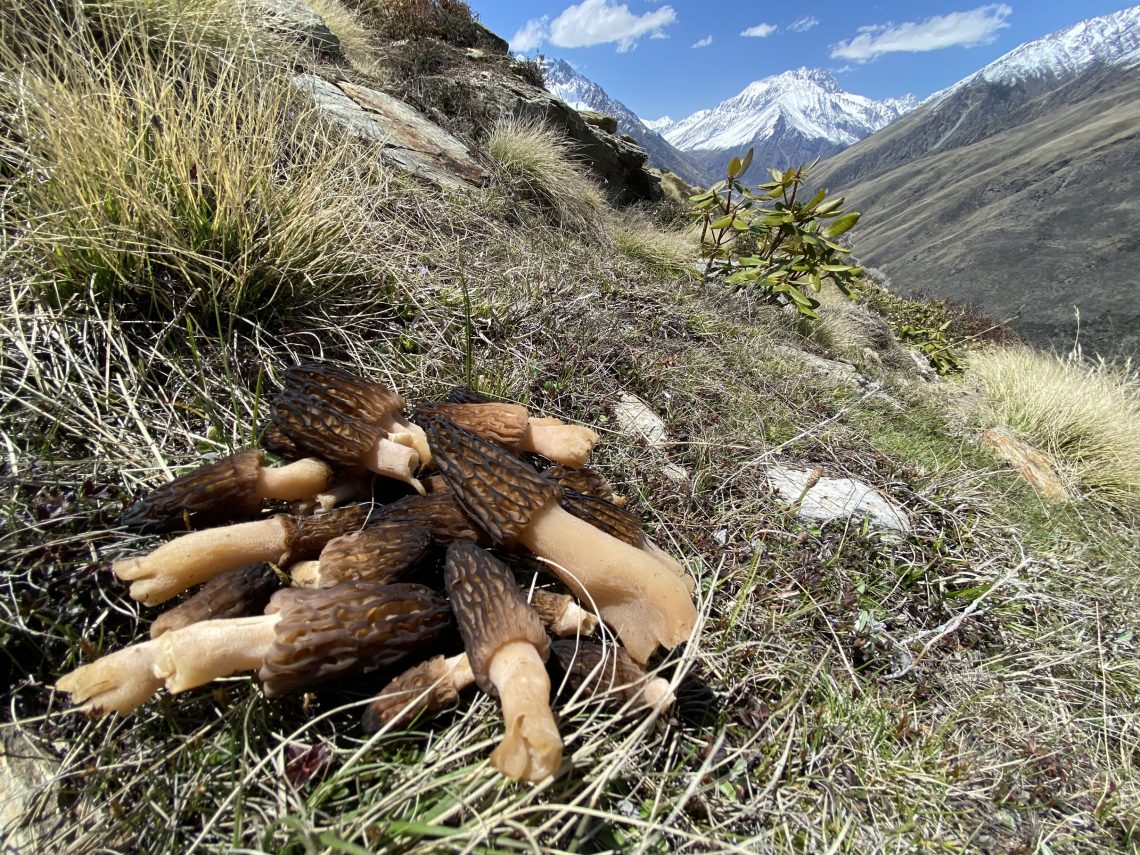
The Magic of Mushroom in Munsiari
This past monsoon, as I roamed the forests of Sarmoli-Jainti Van Panchayat, Munsiari located in the Gori Valley, I reconnected with mushrooms, or what we call ‘Chyau’ in our dialect. As a child, all the mushrooms were ‘ Gubari Chyau’ for me. Now, as I started photographing more than 60 species of mushrooms, I got to know them more closely. Through these mushrooms, I am beginning to understand the world of Fungai– how they can be both nutrition and lethal to us, have the power to alter mental states, and are also medicine for us. They are the internet of the forest and also maintain its health. This is just the beginning of getting to know mushrooms, as I have also witnessed how it has changed the fortunes of many people in our valley.
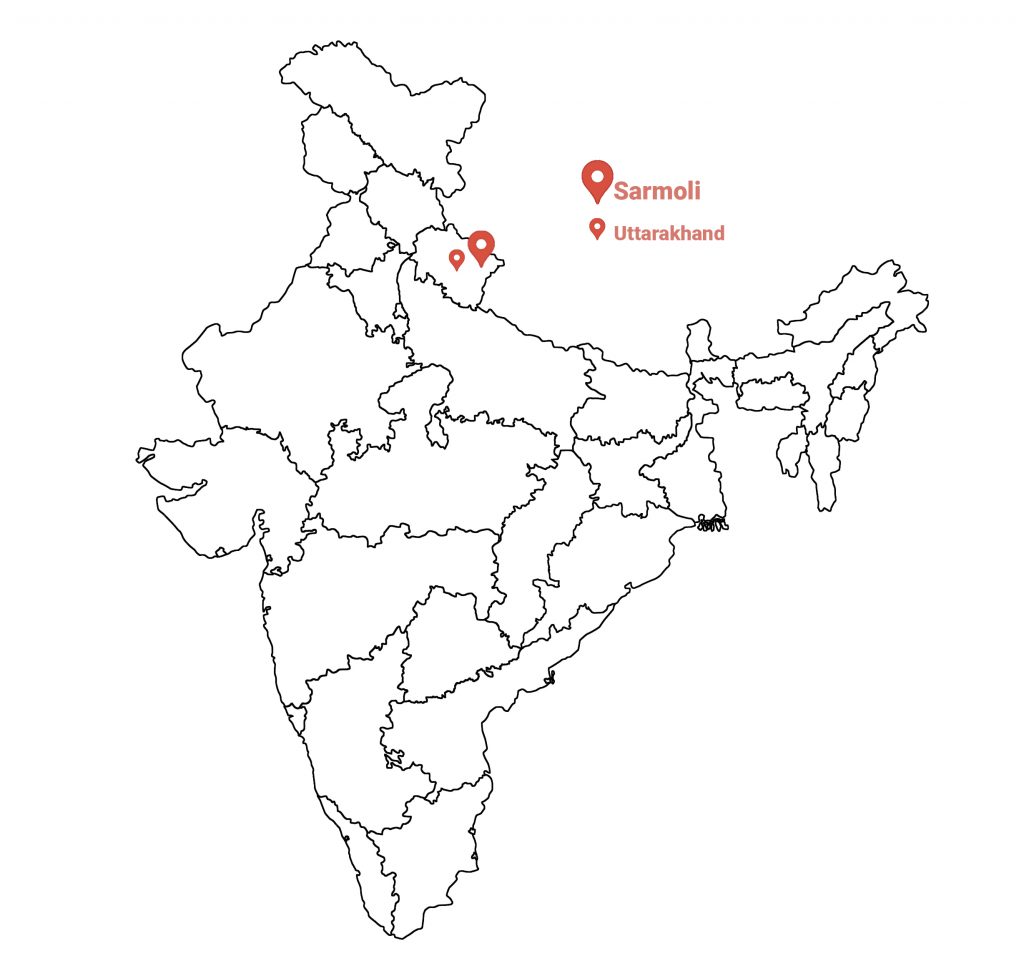
Storyteller: Deepak Pachhai
Village Sarmoli, Munsiari, District Pithoragarh, Uttarakhand
Read this story in Hindi
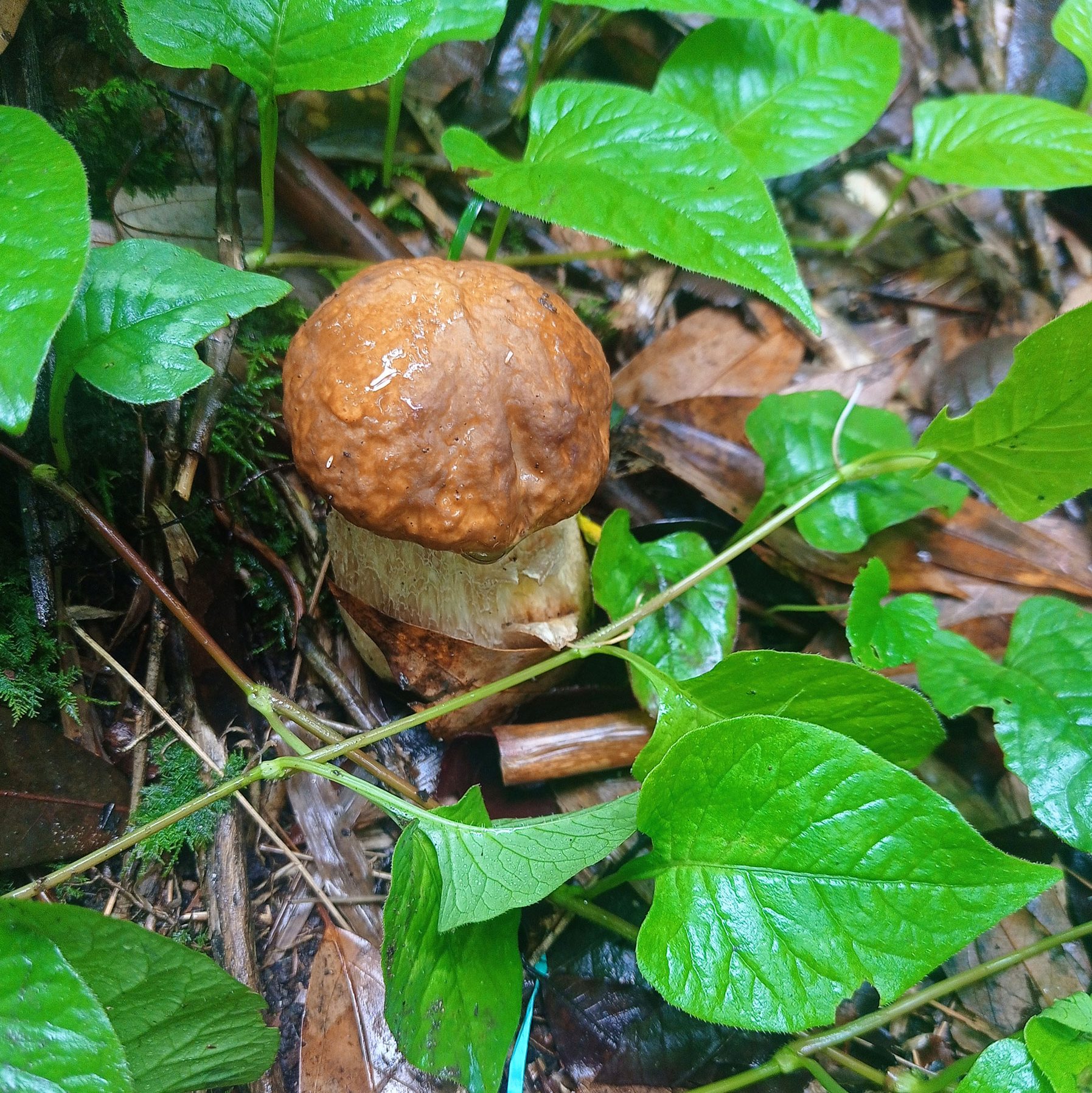
While working on a study of the biodiversity of Sarmoli-Jainti Forest Panchayat of Gori Valley, located in Munsiari near the Tibet border, I have had the opportunity to roam in these forests for the last five months. Here, I discovered many types of mushrooms on the forest floor, piquing my interest and through the monsoons, I wandered in the forest every day, in search of them. I started photographing them and talking about them. Later, I discussed them with Theo, a person knowledgeable about mushrooms in my village Sarmoli. I came to know about many mushrooms that are useful for humans and which ones can be deadly. And I was surprised to learn that mushroom have their own different names.
Actually, I had grown up seeing mushrooms. When I had asked my grandmother the names of some mushrooms 7-8 years ago, she told me they are called Gubari Chyau because often mushrooms are found growing on dung. For many years, it was stuck in my mind that all mushrooms are called Gubari Chyau. In our parts of the Himalayas, mushrooms are called Chyau. For a long while I thought nothing about mushrooms.
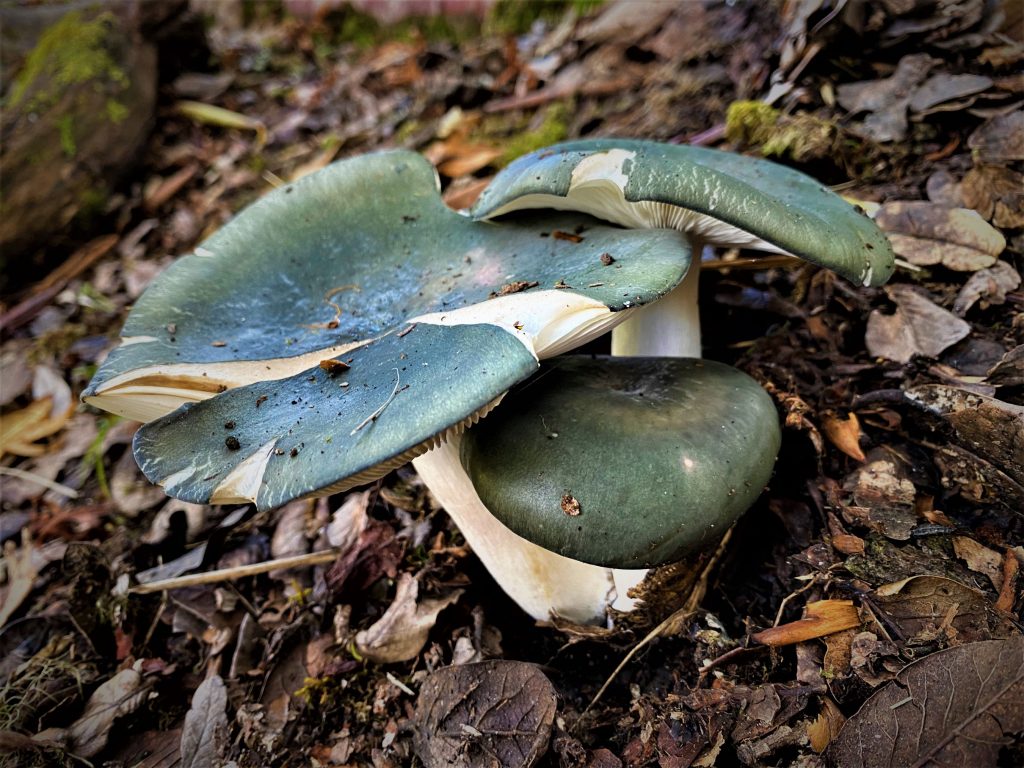
Just between July and November of this year, I have taken photographs of about 60 species of mushrooms in the forests of my Van Panchayat. As a matter of fact, mushrooms originated about 1.5 billion years ago. They started growing on our Earth even before plants and animals appeared. Although there are more than 2000 species of mushrooms in the world, only 25 species of mushrooms are eaten by humans. Mushrooms are considered a food item in the Himalayan region.
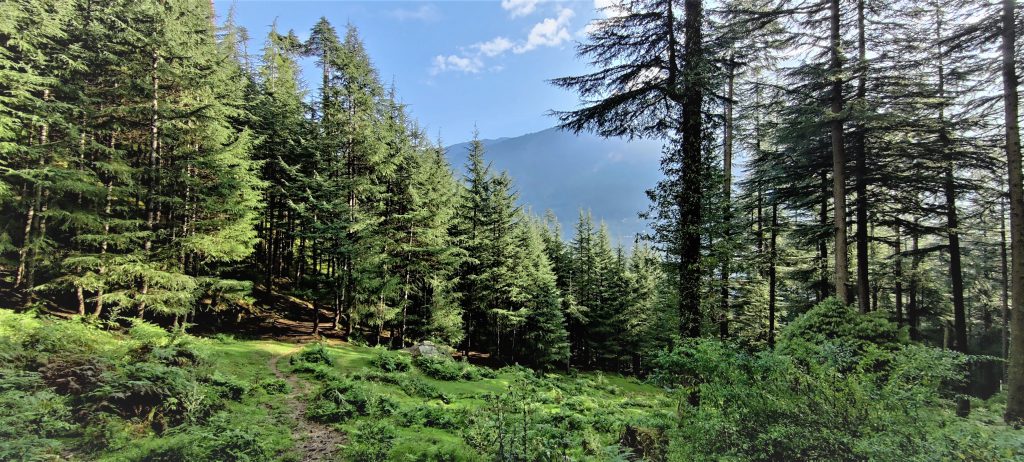
A mushroom is a fungus and has neither leaves nor flowers because it is not a plant. The umbrella-like part of this fungus that is visible above the ground is the fruiting body of the mushroom. A mushroom has spores (its seeds) which are very minute and number in millions, which when the mushroom ripens, spread very fast through the wind from its umbrella-like fruiting body and reach a favourable place and germinate. In the upper Himalaya, mushrooms are found mostly in conifer forests like those of pine, cypress, Cedar and Fir, and in damp and moist places.
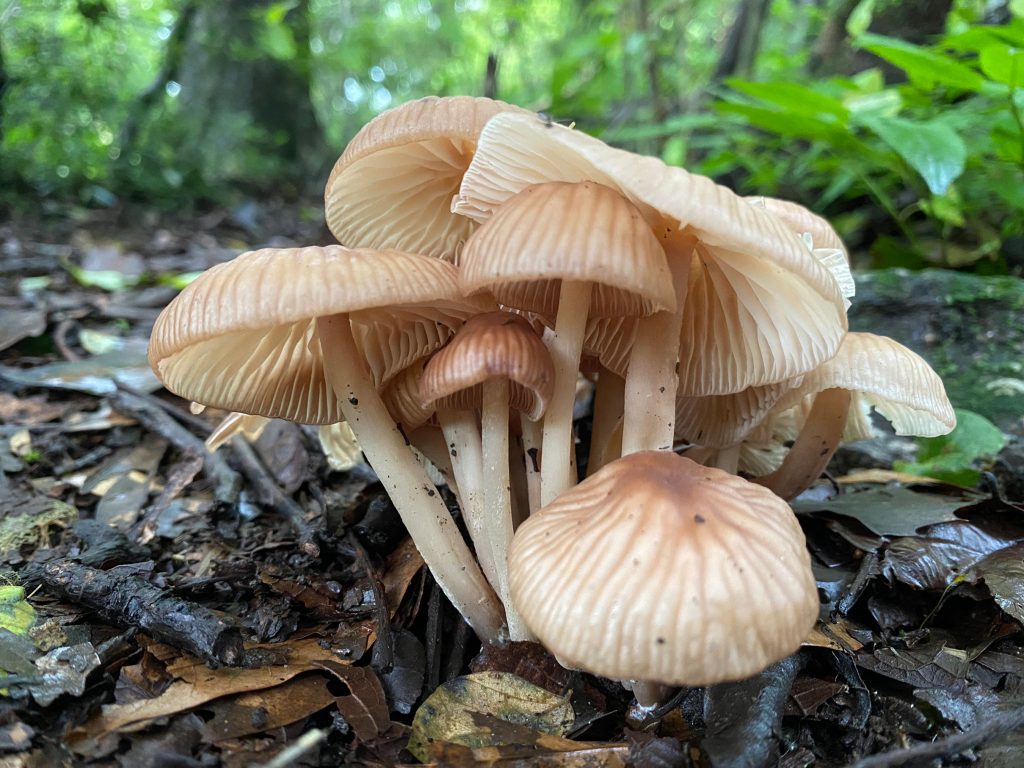
While roaming in this forest, I saw that there were some mushrooms which grew on the rotten leaves of oak and other decaying trees. By properly decomposing dead organisms, their nutrients are released and become available as fertilizer for the trees and plants growing in the forest. These types of mushrooms are called saprophytic fungus.
There are some mushrooms which are found in the roots of trees like Alder and pulses like Rajma and in the roots of legume plants that grow here. These microscopic fungi live together with trees and plants and help each other. These are called symbiotic mushrooms.
I myself was surprised to hear about some such mushrooms which use other living beings to stay alive and eventually kill them. These are called Parasitic Mushrooms, and one very interesting species of this type is the Cordyceps. A particular species of Cordyceps infects ants and takes control of their brain in such a way that it forces the ant to go to the top of a plant. Bats then swoop down and easily pick them off and eat them. In this way, the Cordyceps enters and passes through the gut of Bats to complete its life cycle, for which it forces the ants to sacrifice their lives. Not only ants, it is known that magic mushrooms have the power to change even the mental state of humans.
Mushrooms are also called the internet of the forest. The extensive web of its mycelium (something like its roots) extends underground and is said to help in connecting plants and trees with each other. Apart from making the land fertile, mushrooms are also useful food items. Yeast (which is a fungus) has been used for centuries to make bread rise and leaven it. A medicine called penicillin is also made from mushrooms.
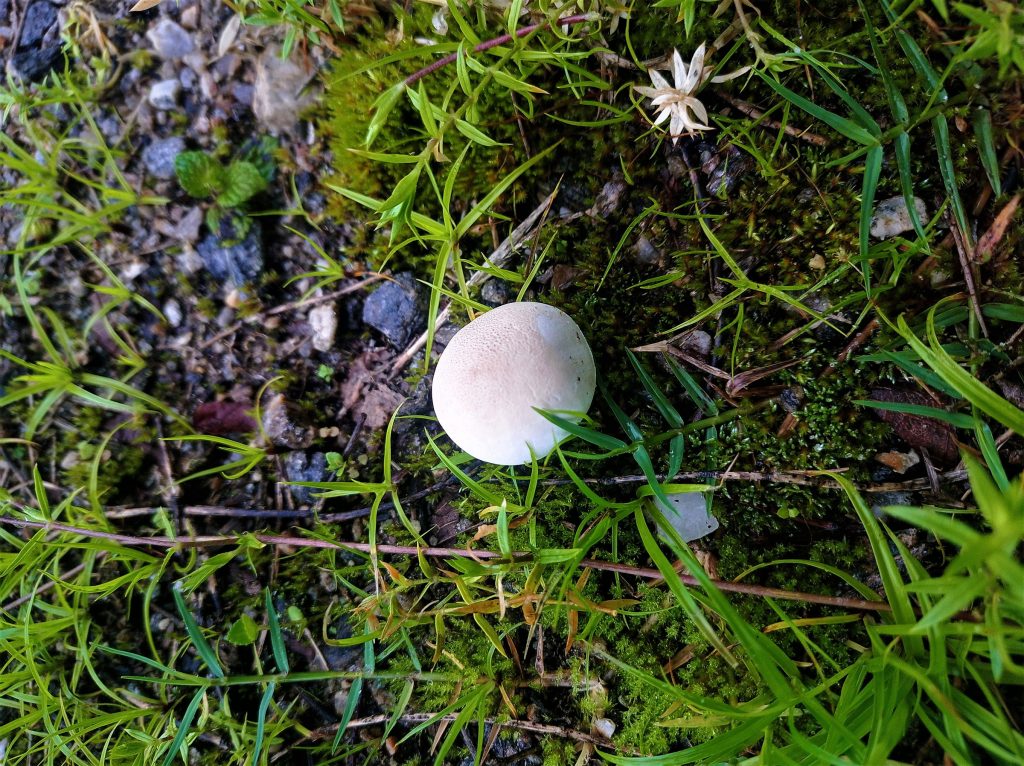
It is evident that mushrooms are present and powerful in many aspects of human life. Actually, in the mountain community of Munsiari, people often believed that only Shilpkars (Dalits) consume mushrooms. It is also said that some Brahmins do not eat mushrooms because they believe it is a non-vegetarian food. But I do not agree. When my neighbours recently brought edible mushrooms from the forest, they gave some to us, which we happily cooked and ate.
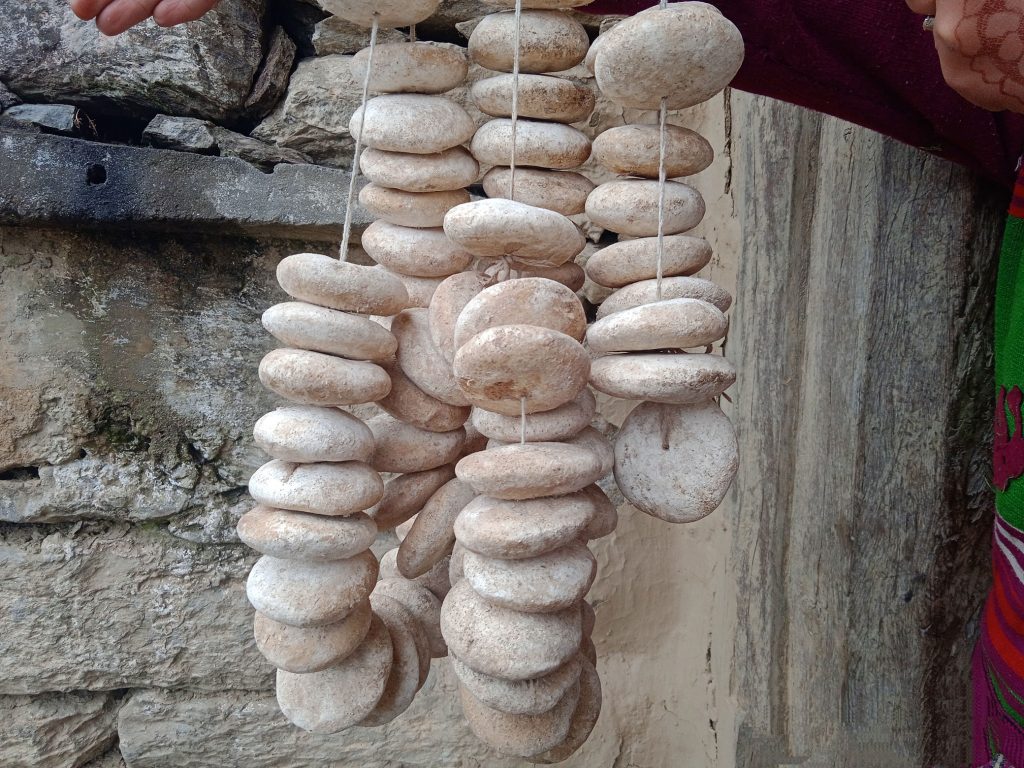
The shepherds of the Gori valley eat mushrooms while working in the forests and often bring them home, dry them and sell them. Traditionally, the Bhotiya (Schedule Tribe) community of Munsiari use a fungus/mushroom to make liquor and jaan (a local beer). In village homes, Balma (yeast) tikkis (tablets) are made, which are pounded and added to the grains to ferment and turn them into liquor.

In the lower parts of our Gori valley (up to 5000 feet) where it is warmer than in Sarmoli, people cultivate paddy. Many umbrella-like mushrooms can be found growing in those rich fields, which people collect to take home, cook, and eat it. During the monsoons in our village Sarmoli (at 7800 feet) whenever the weather is bad, clouds gather and there is thunder and lightning, it is believed that edible mushrooms spring up on the forest floor. The lightning releases nitrogen in the atmosphere and makes it available for the mushrooms to grow. On the second or third day after a thunderstorm, people go into the forests and search for edible mushrooms from dry trees and moist places. Some will also sell them because they earn some income from it.
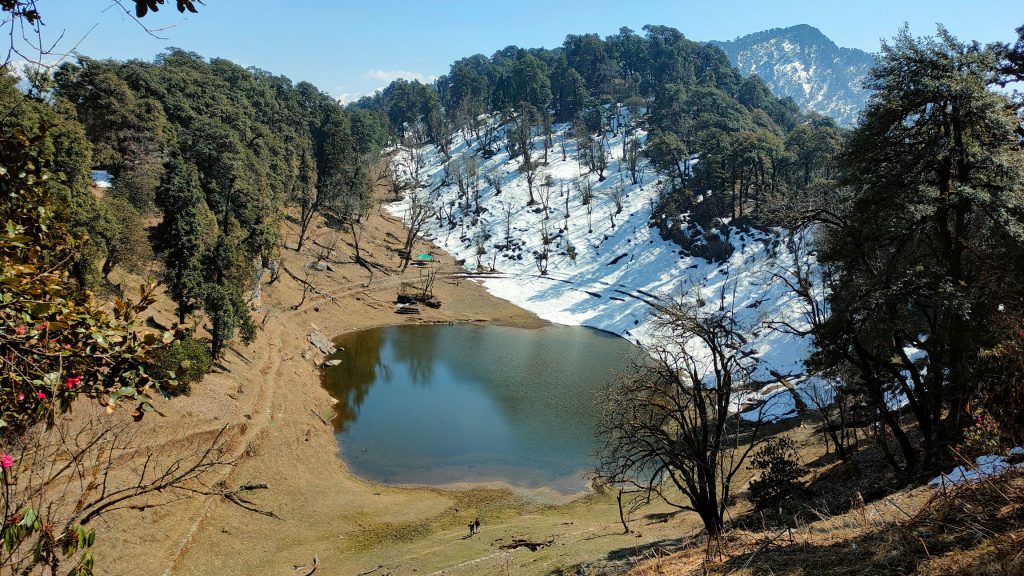
While mushrooms are beneficial in our life, they can also be fatal. It was two years ago, I remember I and some friends went up to the dense and old forest of Thamri Kund (around 9000 feet) which is about 10 km from Munsiari. We looked for and found edible mushrooms and returned home with about 8 kg. But when my father cooked the mushrooms that night to eat, everyone got scared and we ended up throwing away all of it. A doubt entered our minds- what if the mushrooms are poisonous and we did not want to risk finding out.
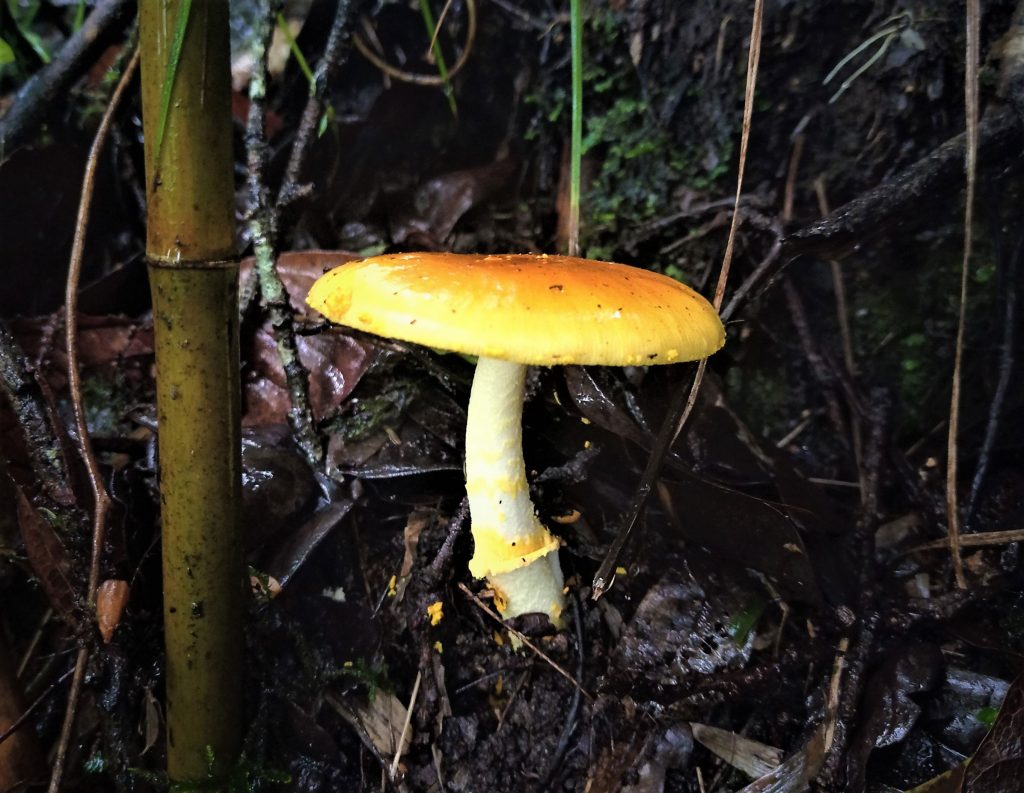
Unfortunately, despite having all the information, sometimes a fatal mistake is made. It was about 25 years ago. A doctor and his family lived in Satoli village of Almora district of Kumaon close to Mukteshwar. His wife worked on environmental issues and together they had a 4-year-old daughter. A Nepali person worked in his house who was well-versed in mushrooms. Like any other day, he collected mushrooms from the pine forest and brought them home. In the evening, the doctor’s wife cooked those mushrooms in butter for a guest visiting from Delhi. She started eating the mushrooms as she cooked them and also placed them in a bowl in front of the guest. The young daughter happily ate from that bowl. The mushroom was of the Amanita species, and despite being knowledgeable about mushrooms, the Nepali house help and the family made a deadly mistake in identifying it. Despite all efforts, in three days both the doctor’s daughter and wife died due to poisoning. The doctor and his guests, who had been busy talking among themselves, did not eat the mushroom and survived.
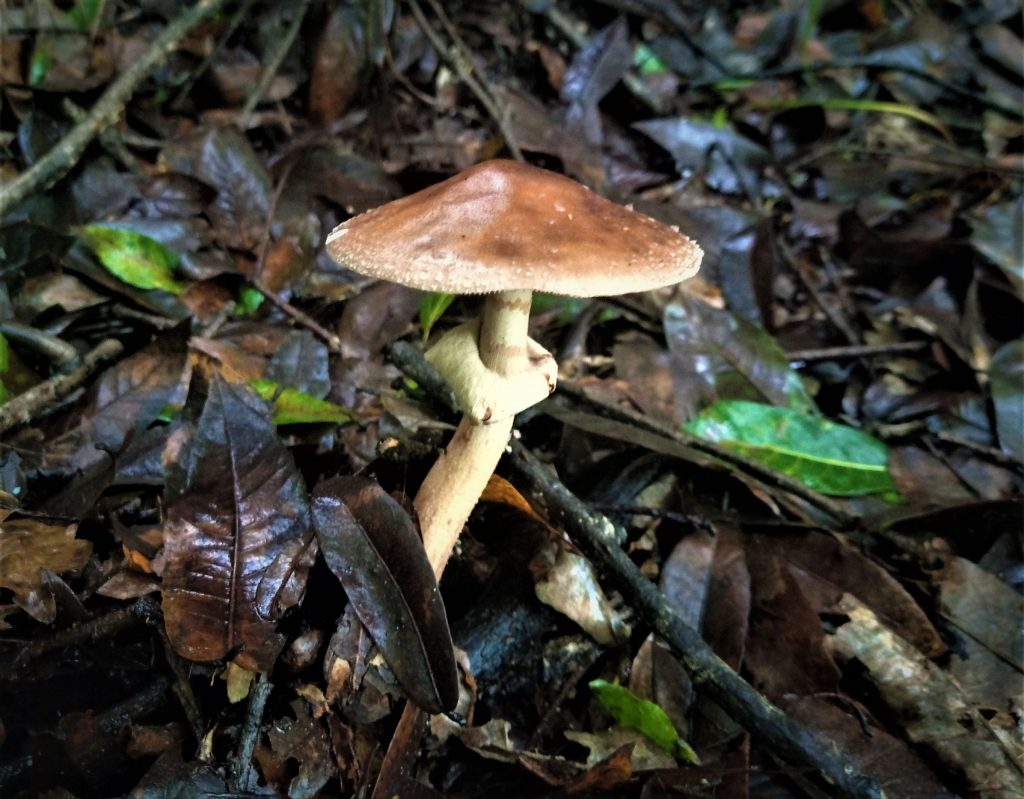
As my understanding about mushrooms grew, I came to realize how poisonous they could be, especially those mushrooms which have a collar on their stipe (stock). Some mushrooms are so poisonous that if you hold them with your hands, you would have to wash your hands thoroughly because if even a small part of it gets into your mouth, it could be fatal.
Clearly, we need to be knowledgeable to eat mushrooms safely. There are some mushrooms called the Death Cap, and it is very poisonous and deadly.

But then there are some mushrooms to be found in our forests which are sold for thousands of rupees. The Gucchi (Morchella) mushroom is one such that is found mostly in our mountains in moist forests, among pine trees, and sometimes even in our fields. They are very tasty to eat. This mushroom is easy to identify and its height is about 8-10 cm. They are often found in clusters or in ones and twos. Our people will collect and dry Gucchi mushroom, make garlands out of it and sell it. When I last checked on the internet, the price of dry Gucchi ranges from thirty to fifty thousand rupees per kilogram. Gucchi mushroom is also considered beneficial for health. Protein, fibre, iron, and many types of vitamins are found in it, like in other mushrooms.
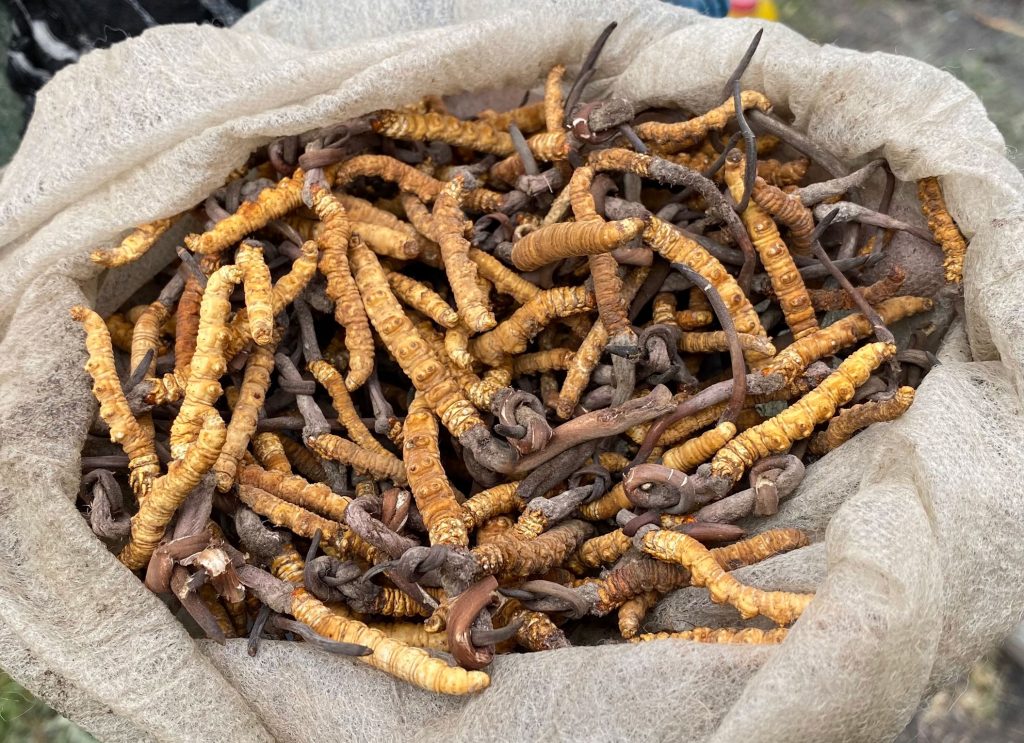
There is another miraculous mushroom which people have been collecting and selling in our valley, which we call ‘Keeda Jadi’ or Yarsa Gombu. It is a mushroom (Cordyceps sinensis) that infects a caterpillar, and it has had the power to change the fortunes of the collectors in our valley. But this is a story in its own right which I would like to tell you some other day.
Meet the storyteller





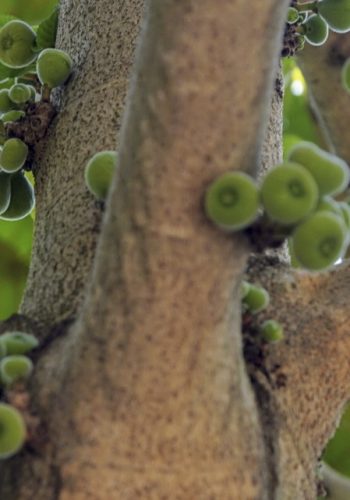


Does Psylocybin mushrooms available at your location?
Hi Aditya- no we do not find this mushroom in Munsiari.